 |
Image 01 The City of Xi'an, where the Terra Cotta army can be found. |
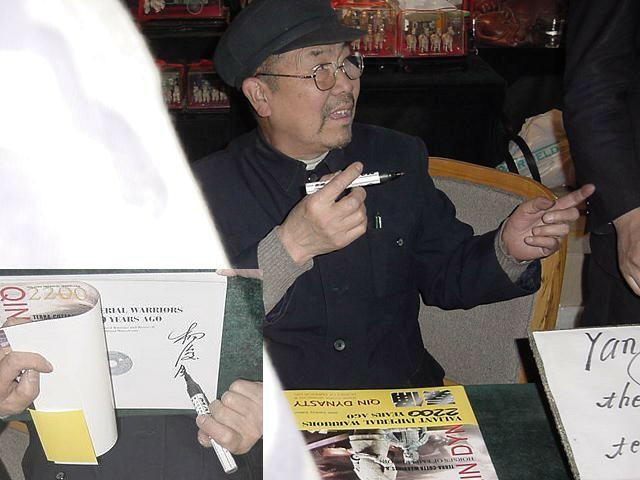 |
Image 02 The farmer who discovered the pits while attempting to dig a well, in 1974. |
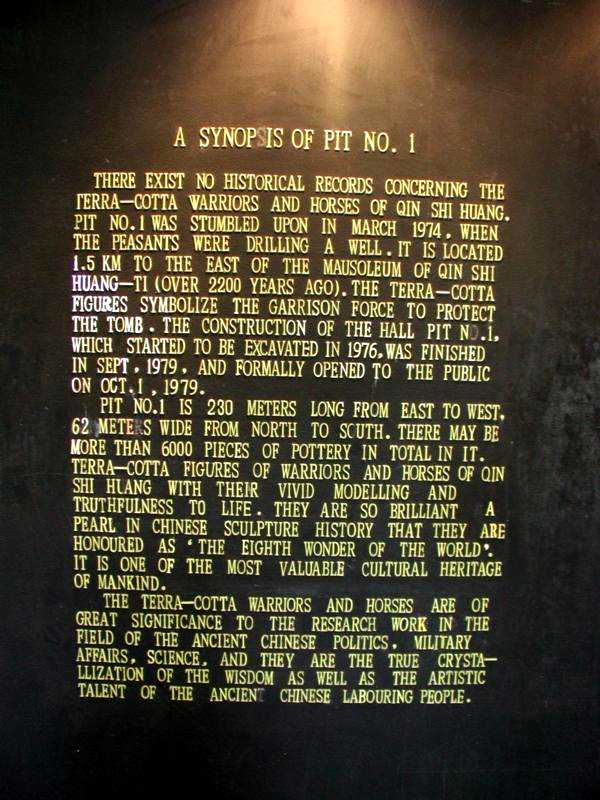 |
Image 03 Plaque found at the entrance to the museum of Terra Cotta figures. |
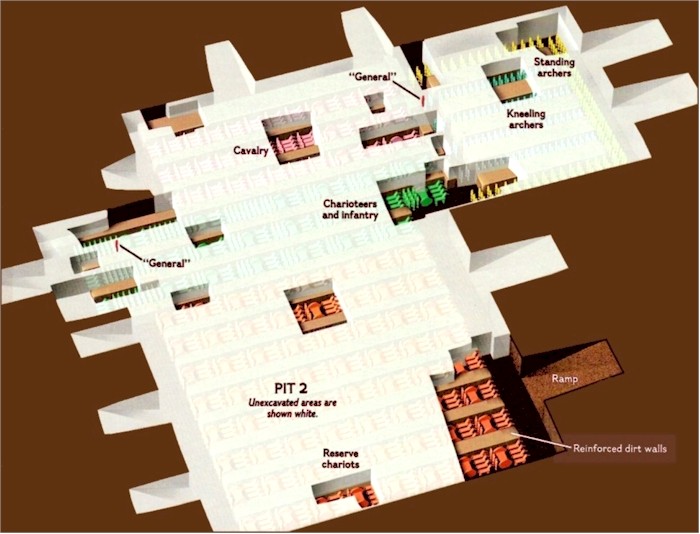 |
Image 04 This diagram of the excavation progress in 'Pit 2' was made in 1996. There has since
been much more excavation work done. |
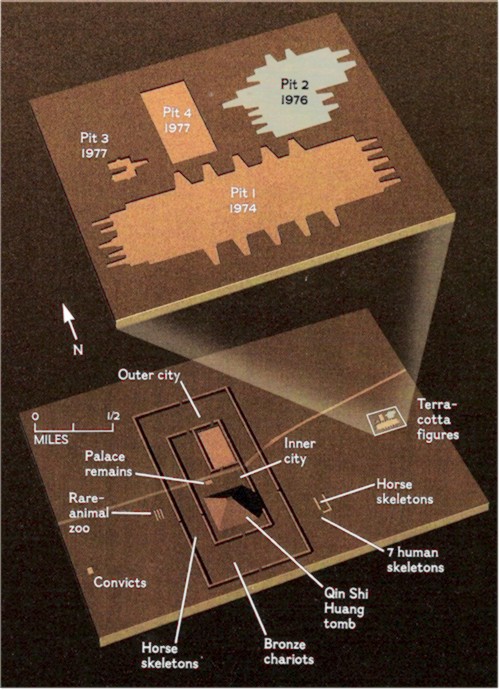 |
Image 05 This diagram of the tomb of the first emperor details where the figures are in relation to the rest of the site. |
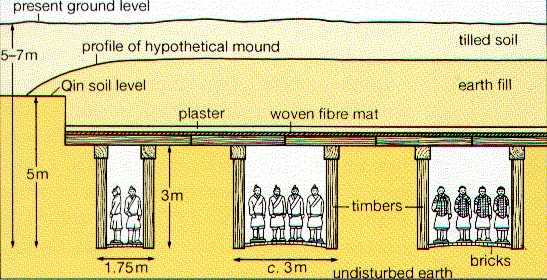 |
Image 06 This diagram shows how the figures were buried and the arrangement of the vaults in
relation to the ground above. |
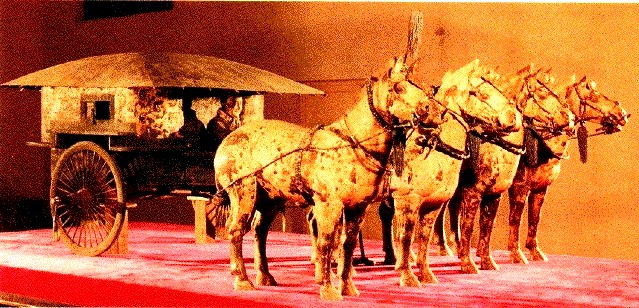 |
Image 07 A bronze chariot, formed at 1/4 scale. This is a replica of the first emperor's royal chariot- the one he died in during a tour of the newly formed unified country of the Qin Empire. |
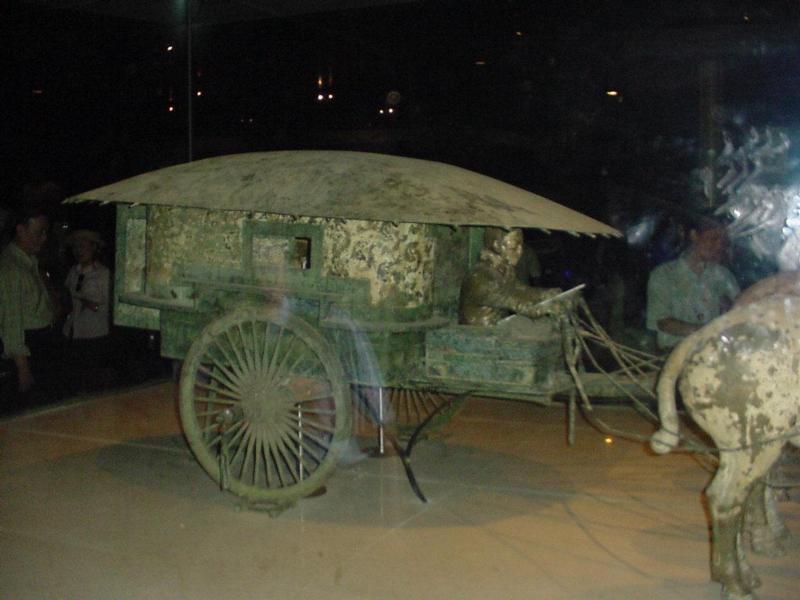 |
Image 08 A bronze chariot, formed at 1/4 scale. This is a replica of the first emperor's royal chariot- the one he died in during a tour of the newly formed unified country of the Qin Empire. |
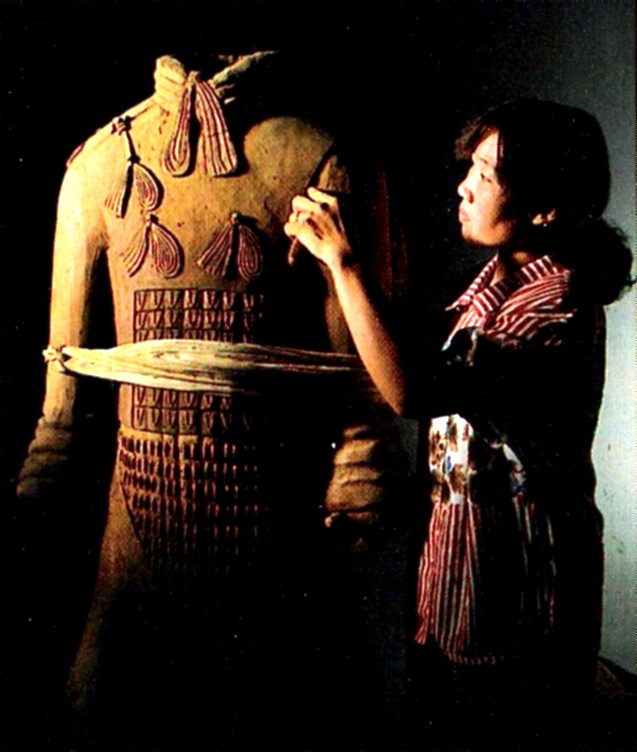 |
Image 09 A woman attempting to duplicate a Terra Cotta figure in a process believed to have been used. |
 |
Image 10 A man attempting to duplicate a Terra Cotta figure in a process believed to have been
used. |
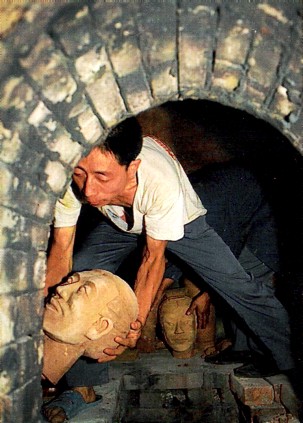 |
Image 11 Here, the heads of recreated figures are being readied for the firing process. |
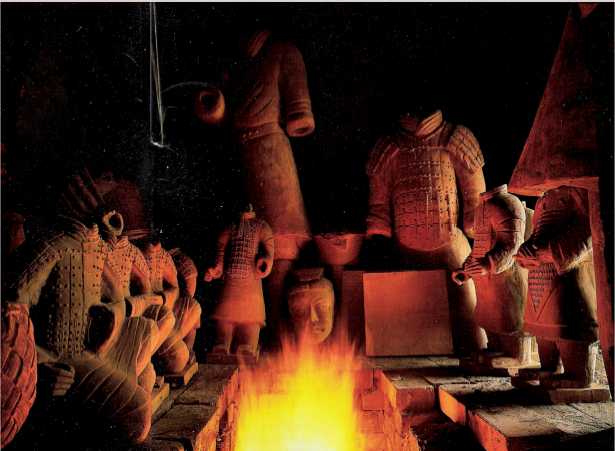 |
Image 12 Here, various sizes of figures are reproduced. The firing chambers used in these
recreation attempts are the same ones used for the original creation of the figures almost 2000 years ago. |
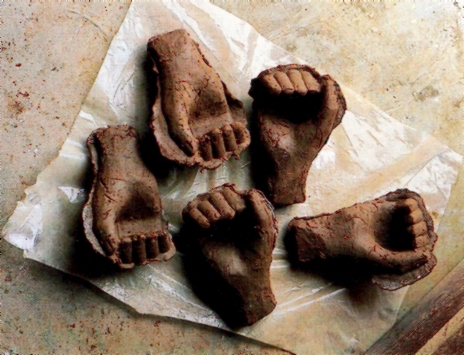 |
Image 13 The hands of the original Terra Cotta figures were as unique as their facial features. |
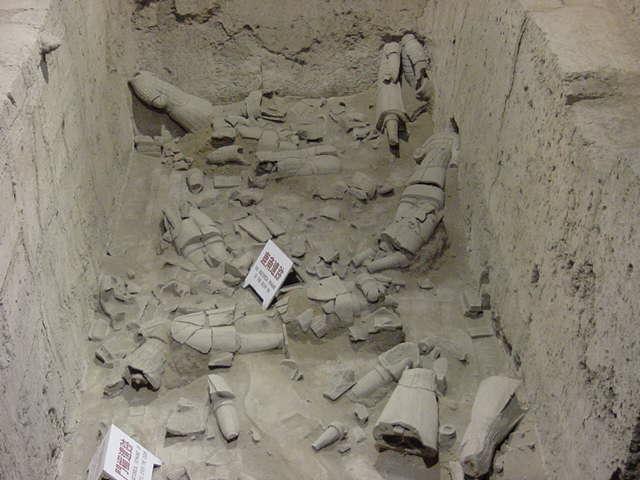 |
Image 14 These figures were found destroyed. Exactly how these figures and others like them came
to such a state is unclear. |
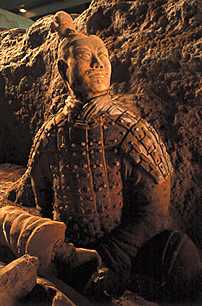 |
Image 15 A partially excavated Terra Cotta figure. |
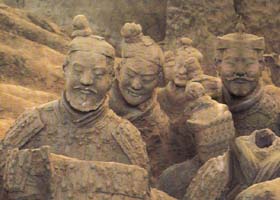 |
Image 16 A group of partially excavated Terra Cotta figures. |
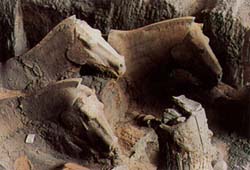 |
Image 17 A group of partially excavated Terra Cotta horses. |
 |
Image 18 A Terra Cotta figure. |
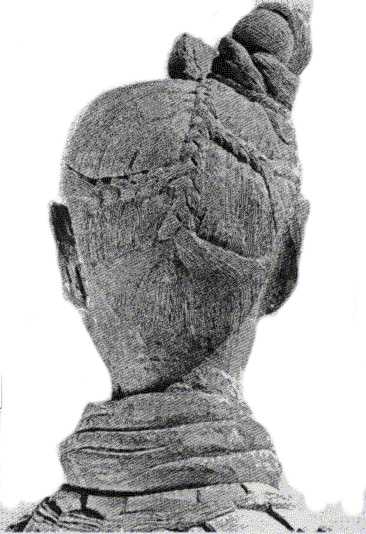 |
Image 19 Back of the head of a Terra Cotta figure. Notice the braid in the hair and the knot
worn on the top right. |
 |
Image 20 A Terra Cotta figure. Notice the detail of the facial hair. |
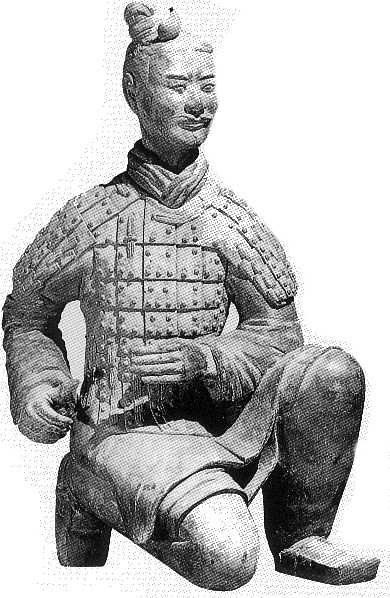 |
Image 21 A Terra Cotta figure kneeling. The hand position suggests that this figure once held a weapon of some sort. |
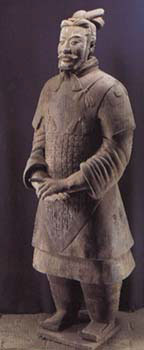 |
Image 22 A Terra Cotta figure holding the reigns of a terra cotta horse. These two figures were found in this exact position. |
 |
Image 23 A Terra Cotta figure. |
 |
Image 24 A Terra Cotta figure. |
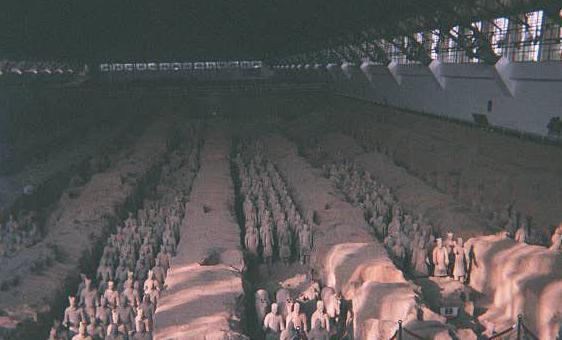 |
Image 25 One of the Terra Cotta vaults. This is part of the Museum of Terra Cotta Warriors and Horses. |
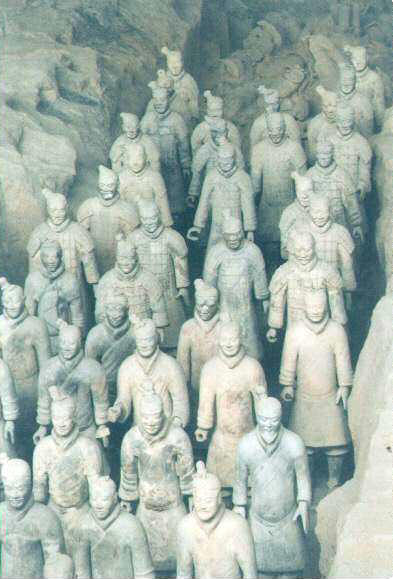 |
Image 26 A row of Terra Cotta Warriors. |
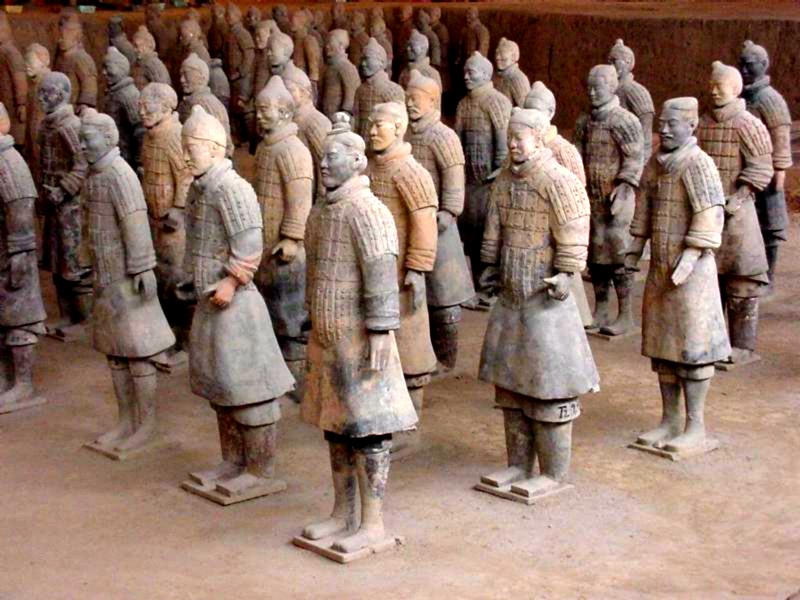 |
Image 27 Terra Cotta Warriors on display. |
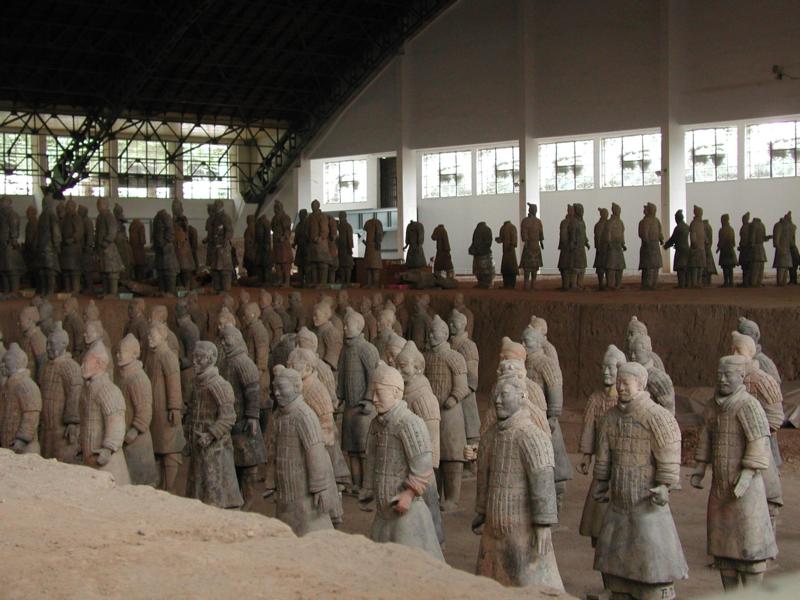 |
Image 28 Terra Cotta Warriors on display. |
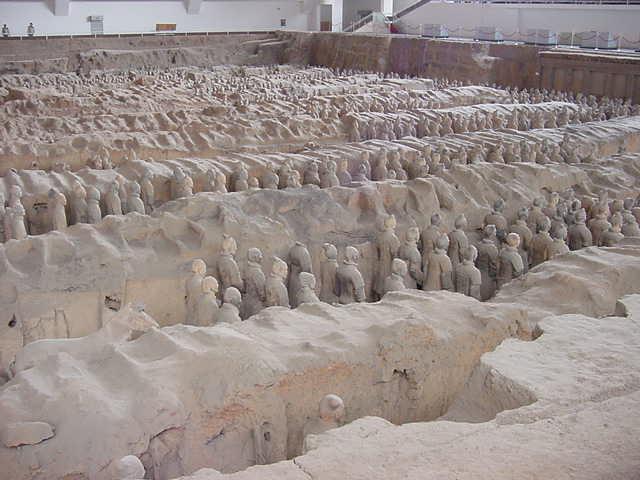 |
Image 29 Terra Cotta Warriors on display. |
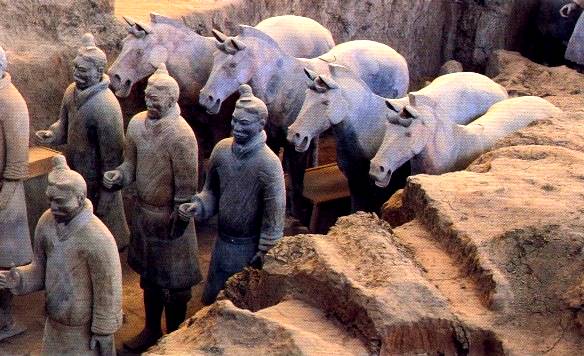 |
Image 30 Terra Cotta Warriors on display. |
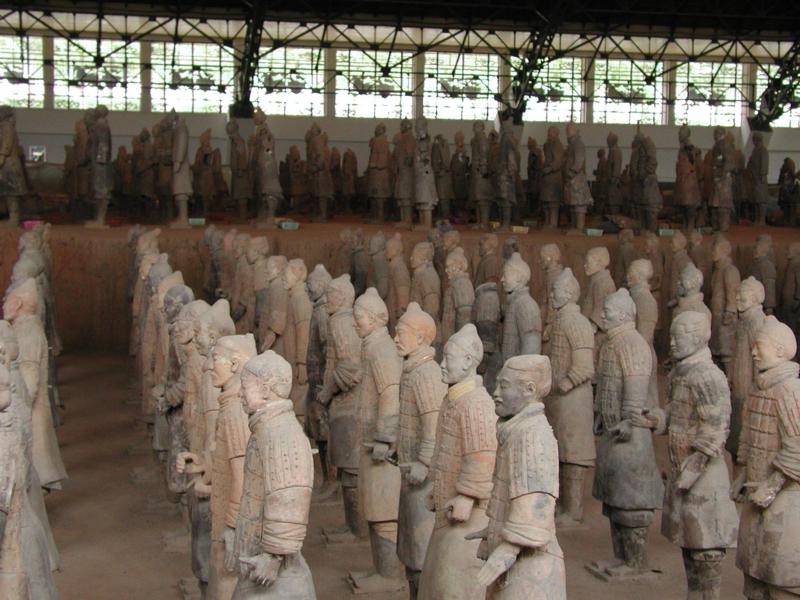 |
Image 31 Terra Cotta Warriors on display. |
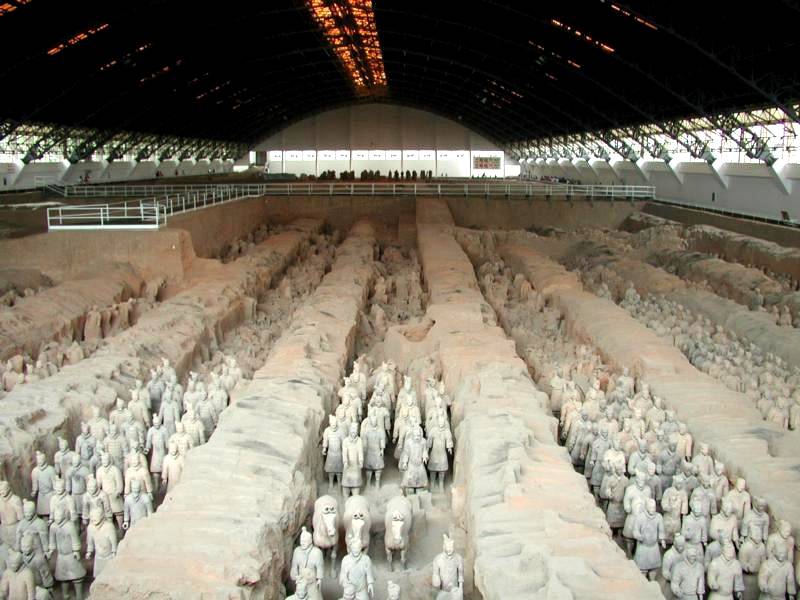 |
Image 32 Terra Cotta Warriors on display. |
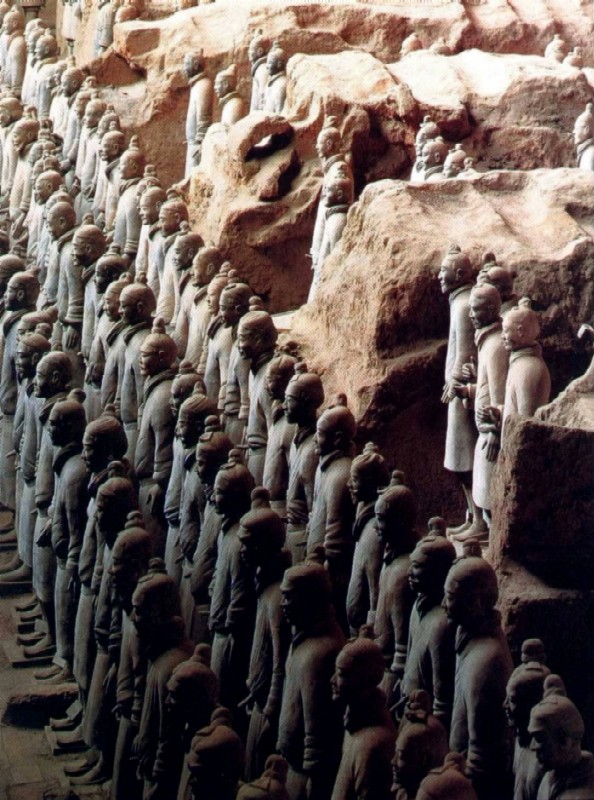 |
Image 33 Terra Cotta Warriors on display. |
| Terra Cotta Army | ||||||||||
 01 |
 02 |
 03 |
 04 |
 05 |
 06 |
 07 |
 08 |
 09 |
 10 |
 11 |
 12 |
 13 |
 14 |
 15 |
 16 |
 17 |
 18 |
 19 |
 20 |
 21 |
 22 |
 23 |
 24 |
 25 |
 26 |
 27 |
 28 |
 29 |
 30 |
 31 |
 32 |
 33 |